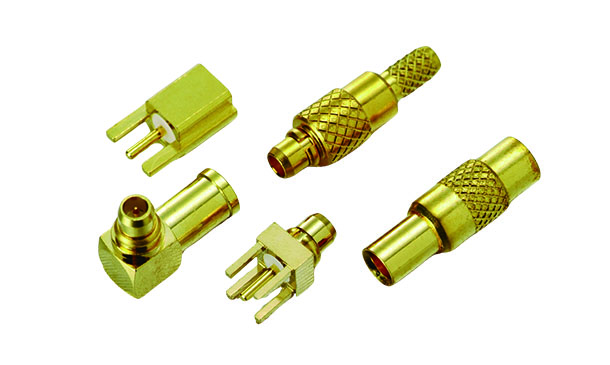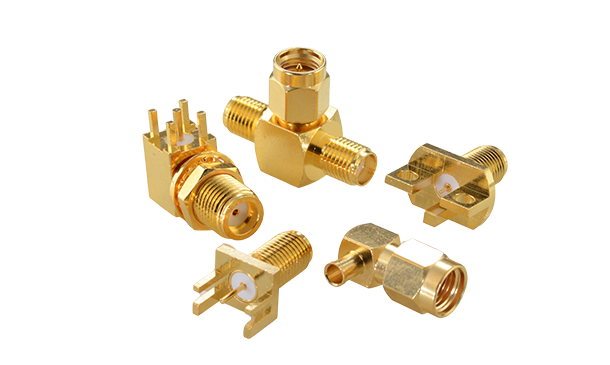- HOME
- Applications
- Blog
- What is Coaxial Cable and Characteristics
What is Coaxial Cable and Characteristics
25-02-12.jpg)
In modern communication and electronic technology, coaxial cable is an important and indispensable medium for signal transmission. With the advancement of technology, the application of various coaxial cables continues to expand, and coaxial cables have become an important part of communication and electronic equipment due to their excellent high frequency transmission performance and anti-interference ability. From daily cable TV signal transmission to professional military radar, the stability and reliability of coaxial cables are widely recognized.
< Extended reading: What are RF Connectors? >
< Extended reading: Understanding Hermetic Sealing Technology and Hermetic Connectors in RF Applications >
What is a Coaxial Cable?
Coaxial cable is a kind of cable with special structure, the inner and outer conductors are arranged in coaxial arrangement, which is specially designed for transmitting signals or high frequency current. Coaxial cables are ideal for RF transmission because of their stable electrical performance and good isolation ability. They can maintain high stability and anti-interference in high frequency signal transmission.
< Extended reading: What is high frequency? High Frequency Features and Applications! >
Coaxial Cable Structure
Understanding the structure and principle of coaxial cable is the basis for mastering the advantages and applications. The common basic structure of coaxial cable includes inner conductor, insulating layer, outer conductor and outer shield. The following is a brief introduction to the main structures and common materials:
- Inner Conductor: Responsible for transmitting signals, usually made of copper, tin-plated copper or silver-plated copper, with high electrical conductivity.
- Insulating Layer: Insulate the internal and external conductors to ensure signal integrity, commonly used materials are polyethylene (PE) and polytetrafluoroethylene (PTFE).
- Outer Conductor: Blocking electromagnetic interference from outside, usually using copper mesh or metal foil material. To effectively protect the signal stability.
- Outer Shield: Protect the cable from external damage and environmental impacts, usually using durable materials such as polyvinyl chloride (PVC).
Seven Technical Characteristics of Coaxial Cable
Coaxial cables are widely used because of their excellent technical characteristics, which give them an advantage in high frequency signal transmission and interference immunity. Below is an analysis of each of the seven technical characteristics, which can be used to gain a deeper understanding of coaxial cables:
- Impedance Characteristics: Stable impedance is the basis of coaxial cable design, common 50ohm and 75ohm designs are suitable for telecommunication and audio-visual applications respectively, to ensure that coaxial cables have matching impedance and low reflectivity.
- Attenuation Performance: High quality materials and structural design effectively reduce signal loss, especially in long distance and high frequency applications with significant advantages.
- Frequency Range: Suitable for a wide range of frequencies from kHz to GHz, coaxial cables meet the requirements of different frequency bands.
- Shielding Performance: The shielding layer design can effectively isolate external electromagnetic interference to ensure the quality of signal transmission.
- Environmental Resistance: Anti-corrosion, waterproof as well as high and low temperature resistance, even in harsh environments are still reliable.
- Flexibility and Mechanical Properties: Designed for installation and handling, it maintains its performance under bending and tensile conditions stability.
- Voltage and Power Capacity: Coaxial cables are capable of carrying higher voltage and power loads, which are suitable for a wide range of industrial and communication needs.
< Extended reading: What is mmWave? Advantages, Disadvantages and Applications! >
< Extended reading: Microwave Technology Principles and Applications >
Two Advantages of Coaxial Cables
The following are two major advantages of coaxial cables: high frequency transmission stability, low loss and interference resistance.
- High Frequency Transmission Stability
Coaxial cables are designed with concentric inner and outer conductors to maintain a fixed impedance characteristic, which is essential for high frequency signal transmission. Since the distance between the inner and outer conductors of the coaxial cable is fixed, good impedance matching can effectively reduce signal reflection and loss, and realize accurate transmission of high frequency signals. It makes coaxial cables an ideal choice for high frequency environments. - Low Loss and Interference Resistance
Anti-interference capability comes mainly from the shielding effect of the outer conductor. The outer conductor is usually composed of metal foil and metal braid, which can effectively isolate external electromagnetic interference and ensure that the signal is not affected by the external electromagnetic environment. This feature allows coaxial cables to operate in complex electromagnetic environments, such as industrial equipment, broadcasting and communication systems, and aerospace fields.
< Extended reading: Microwave Communication: The Core Technology of Modern Technology and the Key Role of RF Connectors >
Comparison of Coaxial Cables with Other Cables
There are many types of cables on the market, such as twisted pair and fiber optic cables, but coaxial cables are irreplaceable in some occasions due to their unique performance. Although coaxial cables are not as flexible as other cables in terms of weight and flexibility, their high frequency performance and interference immunity give them an obvious advantage in RF applications.
Comparison of Transmission Performance:
- Coaxial Cable: Designed for high frequency signals with stable impedance characteristics, suitable for RF and microwave applications.
- Twisted Pair: Utilizes the intertwined structure of the two wires to reduce some of the interference, but is not as stable as a coaxial cable.
- Fiber Optic Cable: Supports high speed data transmission without electromagnetic interference, but requires professional skills for installation and maintenance.
Comparison of Isolation Efficiency:
- Coaxial Cable: The outer conductor isolation layer design enables it to effectively block external electromagnetic interference.
- Twisted Pair: Un-isolated Twisted Pair (UTP) has average isolation performance, but Isolated Twisted Pair (STP) improves interference immunity.
- Fiber Optic Cable: Optical signal transmission, completely immune to electromagnetic interference, excellent isolation performance.
Installation and Maintenance Comparison:
- Coaxial Cable: Easy to install, heavier weight, not suitable for small space or high flexibility requirement.
- Twisted Pair: Lightweight and flexible, suitable for multi-cable and dense environments, avoid excessive length or high frequency applications.
- Fiber Optic Cables: Require professional technical installation, precision machining of connectors, and higher maintenance costs.
Comparison of Applications:
- Coaxial Cable: widely used in RF communication, cable TV, surveillance system and military radar and other high frequency requirements.
- Twisted Pair: Commonly used for home and business LAN lines and telephone communications, suitable for low to medium bandwidth needs.
- Fiber Optic Cables: Suitable for data communication, internet and medical equipment connection with long distance and high speed transmission requirements.
A comparison of the various types of cables can be found in the table below:
|
Cable Type |
Advantages |
Disadvantages |
Manufacturing, Production etc. costs |
Applications |
|---|---|---|---|---|
|
Coaxial Cable |
High frequency stability, strong interference immunity, good isolation performance. |
Heavier weight, less flexible. |
Moderate |
Broadcasting, RF Communications, Monitors, Radar |
|
Twisted Pair Cable |
Low cost, simple structure, suitable for short distance and low-speed data transmission. |
Average interference immunity, not suitable for high frequency or high power applications. |
Lower |
Local Area Network (LAN), Telephony |
|
Fiber Optic Cable |
Extremely fast transmission speed, high bandwidth, no electromagnetic interference, ultra-long distance transmission. |
High installation and maintenance costs, sensitive to physical damage. |
High |
Internet, Medical Equipment, Data Center |
Coaxial Cable Applications
Coaxial cables are widely used in a number of important applications due to their technical features and advantages. These applications demonstrate the value and importance of coaxial cables in a variety of fields, and the following are some of the main application scenarios:
Communication System
- Cable TV Network: Coaxial cables are used to transmit high-definition video and audio signals to ensure stable transmission quality.
- Wireless Communication: RF signal transmission between base station and antenna, coaxial cable to support high speed data transmission needs
Industrial Automation Equipment
- Mechanical Equipment: Highly accurate and stable signal transmission between sensors and controllers for use in high interference industrial environments.
Defense and Aerospace
- Radar communication: Coaxial cable supports stable transmission of high frequency signals.
- Aeronautical Navigation: high isolation performance for precise positioning and communication.
Conclusion
Coaxial cables play an important role in modern communications and electronics due to their excellent high frequency performance, low loss, and excellent interference immunity. Despite the availability of twisted pair and fiber optic cables, coaxial cables have a unique advantage in RF signal transmission. With the development of technology, coaxial cables are widely used and have become an important cornerstone of modern technology. As a professional manufacturer of RF microwave connectors, Huang Liang Technologies provides a wide range of RF microwave coaxial cable connectors to meet the needs of various applications. If you want to know more about our products, please feel free to contact us.
< Extended reading: Explore Microwave Frequency and Their Applications in RF Microwave Connectors >
< Extended reading: How to Choose RF Blind Mating Connectors? >




